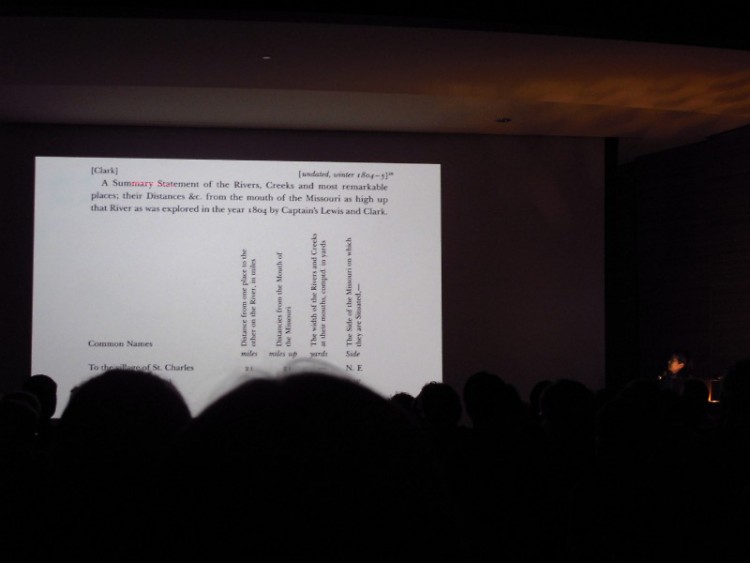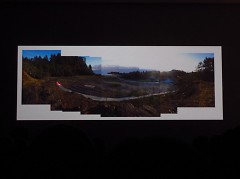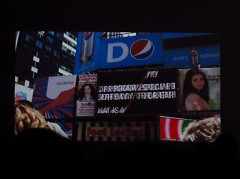A couple hundred tushes warmed 275 seats, plastic and winged, to receive Maya Lin this evening at the Grand Rapids Art Museum.
The artist is best known nationally for the Vietnam Veterans Memorial in Washington, DC. In Grand Rapids, "Ecliptic" issued from Lin's imagination and sits as the basin of Rosa Parks Circle.
In the nine years since Lin installed "Ecliptic," Rosa Parks Circle has become a hub for summer festivals and doubles as an ice rink in the winter. The basin is studded with constellations that shine like mini spotlights on summer nights and beam through the ice in the winter.
Lin is highly sought after to create functional art spaces and has been given acres as canvases in New York, California, Colorado, New Zealand and China. Her projects range from public institutions to homes to ethnic cultural centers.
Her lecture, Projects and Processes, began with a short film about human impact on extinction, asserting an impending sixth mass extinction and the only one not to have been caused by a catastrophic event.
Lin then began the slideshow with many before and after pictures, details and renderings of her creations. Some of her inspiration comes from poetry (Emily Dickinson was mentioned) and she often plays with the concept of water, showing a slide of a mounded lawn meant to suggest waves.
Although known for her outdoor creations, Lin has also done indoor installations that explore natural forms. A pre-"Ecliptic" series called "Topologies" included two-by-fours tiled into a hill that kisses the ceiling, broken glass tumbling out from the corner of a room and aluminum wires graphing out water forms.
More recently, Lin has focused on two projects, one with Native American tribes in the Pacific Northwest and one she calls the "Extinction Series" as part of her not-for-profit, the What is Missing Foundation.
To convince her, several Native American tribes from southern Washington congregated at Lin's studio to invite her to commemorate Native American heritage on the Lewis and Clark expedition trail. Meriwether Lewis and William Clark are credited with discovering the Pacific Northwest. To familiarize herself, Lin walked the land that the explorers journaled about. It wasn't "discovered," she realized. People lived there and she was walking through many tribes' homelands.
"'Can you help us tell that story?'" the tribes asked Lin.
The end of Lin's lecture focused on environmentalism. Out of What is Missing's endeavors have come many installations, some of which connect people around the world at different cultural centers. Efforts also include 100 two-minute films which emphasize that each film's duration is equal to the time it takes for another species to become extinct. These films were screened in museums and on the MTV billboard in New York's Time Square on Earth Day 2010.
"By Earth Day of next year, we'll launch something called a map of memories that will invite anybody to share a memory of something they've personally watched disappear."
Lin made the point that extinction is not limited to species but to habitats as well.
"To me memorials have never been about the past except to teach us about the future," Lin said. "It's as much about—not just the species but—the habitats that are rapidly disappearing."
There was little time for questions, but when prompted, Lin shared that she had been contemplating someday creating an installation drawing from the Great Lakes. The room resonated with applause.
The Rapidian, a program of the 501(c)3 nonprofit Community Media Center, relies on the community’s support to help cover the cost of training reporters and publishing content.
We need your help.
If each of our readers and content creators who values this community platform help support its creation and maintenance, The Rapidian can continue to educate and facilitate a conversation around issues for years to come.
Please support The Rapidian and make a contribution today.




Comments
very interesting and a bit sobering. i'm pleased that she spoke so much about environmental issues and that foreboding 'sixth mass extinction'. one does get the sense these days of just how bad is it? when it comes to environmental issues. sounds like it was a great lecture. serious stuff.